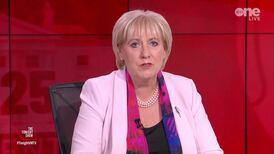So give us the figures The big headline in this week's data was the drop of the unemployment rate below 10 per cent, according to the Central Statistics Office. There is nothing particularly significant about the 10 per cent figure in itself, but it means the rate is now back in single figures. It peaked at more than 15 per cent in early 2012, so the drop is substantial.
Isn't a lot of it due to emigration? Yes, although jobs growth is significant too. There are always a lot of moving parts in unemployment figures, which are affected not only by emigration but also by factors such as young people entering the workforce and people retiring. Often a clearer picture comes from the number of people in work. This peaked at just under 2.17 million in late 2007 and bottomed out at less than 1.84 million in mid 2012 – a loss of more than 330,00 jobs. We have got close to 100,000 jobs back as the market recovers, and total employment is back where it was in 2005. More than 40,000 of the jobs in that net increase have been created over the past year. As someone once said, "A lot done, more to do." Net emigration is slowing, although more young people are still leaving than are returning.
What about the detail of the figures? There are plenty of statistician jokes about being broken down by age and sex. If you want to look at the detail, the latest figures are from the national employment survey on the CSO website; the data is broken down by age, sex, region, full and part-time employment and so on. Most of the data is broadly encouraging. There is a clear pick-up in full-time employment; most of the increase in the early part of the recovery was in part-time jobs. Long-term unemployment is also falling; the rate is now below 6 per cent. This is important, as the longer people stay out of work the harder it is to get back into employment.
Does this mean the economy is fixed? No. But it is a sign that we are heading in the right direction. The overall number of people at work is one of the clearest indicators: it is affected by fewer statistical quirks than GNP and GDP figures, and people moving from unemployment to work is one of the clearest signs of economic progress. So rising employment indicates that the growth we're seeing is real, and it has continued for long enough to show that the recovery is being sustained. There is still a way to go, of course.
Any weak spots? The recovery is stronger in Dublin and the east. Average unemployment is 9.9 per cent, but the figures go as high as 12.4 per cent for the midlands. It's 12.8 per cent in the southeast, 8.8 per cent in Dublin and 7.8 per cent in the mideast. Total employment rose in most regions last year, although it fell slightly in the west. This regional spread is a political issue – as is the fact the retail sector continues to struggle, particularly in smaller to medium-sized towns across the country.
Does it all make it more likely that the Government will be re-elected? A better job market is an important political indicator, although to what extent the Government gets credit is hard to assess. Improving trends are an incentive for the Coalition to hold on for a late election, as forecasters say the unemployment rate could be down to 9 per cent by year end. By then close to two million people could be working. It's hard to know exactly what creates a public feelgood factor, but more people at work has to help.








